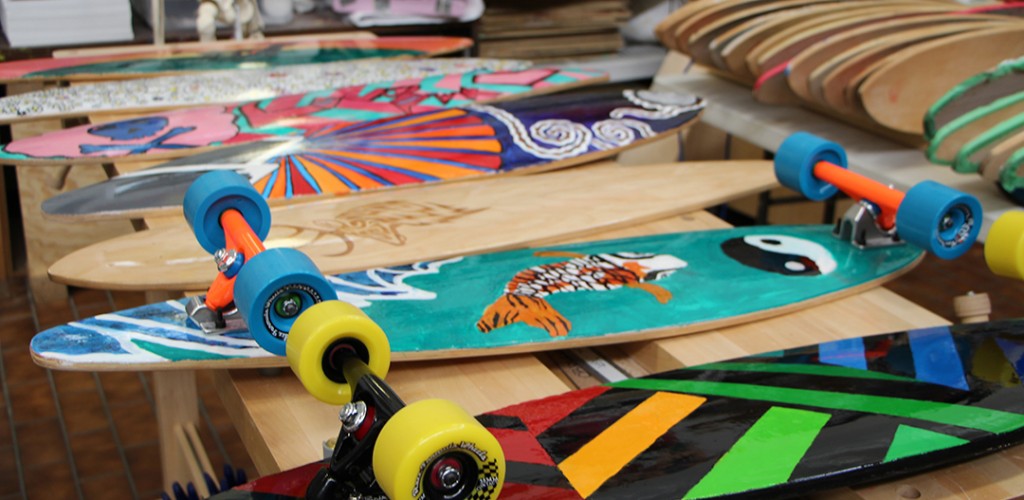A cornerstone of an STS education is integrated programming – meaning that students benefit from a holistic, balanced education where curriculum is reinforced in a variety of learning environments.
One example is when our Grade 6 students design and build their own skateboards.
 Students are introduced to the unit by exploring the history of skateboarding and reviewing the principles of design. Students then provide a series of drawing ideas and commit to their final design. Upon completion of the drawings, students are given seven layers of wood veneer, which they glue together and lay upon a mould. The glued boards are put in a vacuum compressor to harden and cure. Students complete the final shaping/finishing of the boards, and then proceed to paint their design on the board. The entire process is quite involved and takes a fair bit of commitment, but the final product has the student experiencing the complete process of skateboard design and fabrication, leaving them with a fully functional longboard. Where many students are content to hang their finished boards as a piece of art, just as many will put wheels on and enjoy riding their very own custom creations.
Students are introduced to the unit by exploring the history of skateboarding and reviewing the principles of design. Students then provide a series of drawing ideas and commit to their final design. Upon completion of the drawings, students are given seven layers of wood veneer, which they glue together and lay upon a mould. The glued boards are put in a vacuum compressor to harden and cure. Students complete the final shaping/finishing of the boards, and then proceed to paint their design on the board. The entire process is quite involved and takes a fair bit of commitment, but the final product has the student experiencing the complete process of skateboard design and fabrication, leaving them with a fully functional longboard. Where many students are content to hang their finished boards as a piece of art, just as many will put wheels on and enjoy riding their very own custom creations.
No other school offers this kind of project. This is integrated programing in action.
Why do STS students make their own skateboards?
Projects like this enhance our academic programming and support our mission. Students benefit from this well-rounded approach which reinforces concepts and removes silos so that learning can be applied in multiple ways. This gives them the tools to be able to solve ‘real world problems’, i.e. climate change is an economic, scientific, social, and political issue. Also, they learn critical skills that will benefit them throughout life, including public speaking.
Most importantly – students are excited to go to school because they enjoy a wide-variety of engaging activities intended to enhance their love of learning, character development, and overall health and well-being.
